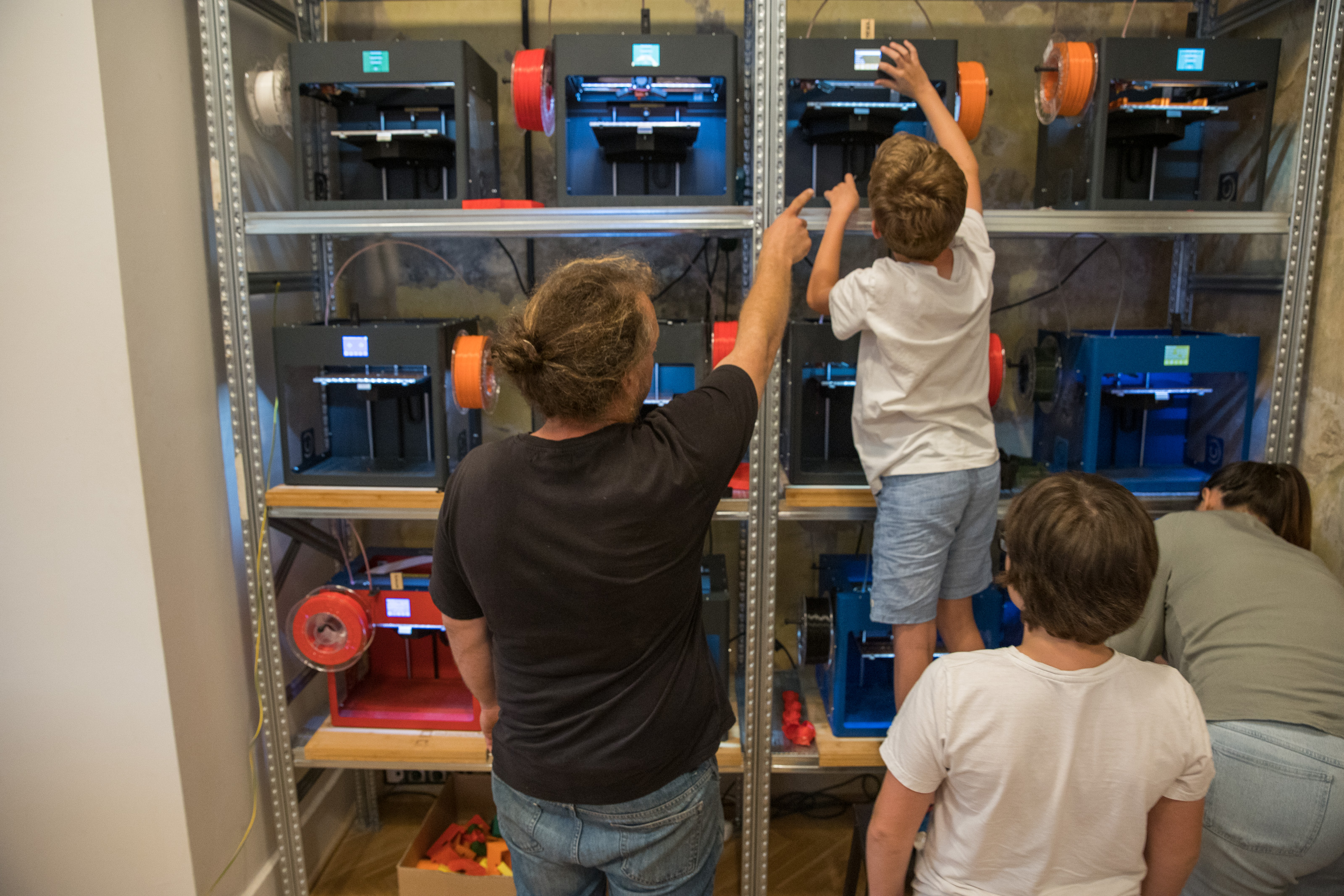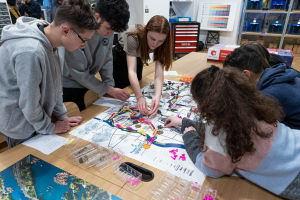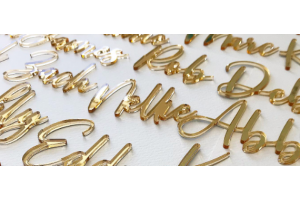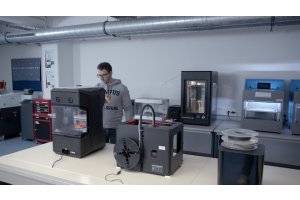Making the Most out of 3D printing in the classroom

BRING LEARNING ALIVE WITH 3D PRINTING
When the first wave of the coronavirus pandemic hit, 3D printing proved a lifesaver in shortening production chains and providing much-needed medical supplies, like nasopharyngeal swabs and protective face shields, which had quickly become in short supply. Whether or not this momentum carries over post-pandemic is uncertain. The technology has the potential to revolutionize several areas of production where customization is key, from prosthetics to running shoes. Just how to make this transformation a reality, however, is a question organizations of all sizes and industries still grapple with.
Schools are no exception. 3D printers have been popping up in classrooms across the globe for years, but teachers often have a hard time figuring out what to do with them – let alone how to use the technology to prepare children for future jobs and teach indispensable skills. A global survey into the adoption of 3D printing in educational settings has found that.
A whopping 87% of educators limit student access to 3D printers.
More than a third said that they find it challenging to understand how 3D printing can be used in their curriculum, Education Technology reports.
The educational possibilities that come with the ability to bring any idea to life in the classroom are endless. During 3D modelling, objects often need to be resized using simple formulas, which helps improve mathematical and engineering skills. Students’ creativity is put to the test when they design solutions to real-world challenges, and so are their problem-solving and critical thinking skills when things go wrong. Empathy, collaboration and communication are essential both for completing 3D design tasks in class and functioning effectively in today’s workplace and society at large.
Tell a story
Using 3D printing for educational purposes requires much more than a printer, some PLA and a group of enthusiastic teachers. After the excitement of printing a couple of downloadable templates wears off, the head-scratching usually begins. Not to mention that printing a Baby Yoda figurine to wow students might sound like a good idea, but it takes an excruciatingly long time, costs a lot and holds little to no educational value. Creating and sharing stories is the oldest form of teaching.
Abstraction, generalization and personification are key in children’s cognitive, mental and psychological development as well as understanding, deepening and rethinking the rules of social behaviour. Stories teach, entertain and connect students, and most importantly, keep them engaged in 3D printing, from modelling through slicing to post-processing.
For example, if you ask a group of 14-year-olds to design and 3D print a water tank, most of them will probably lose interest before you even finish the sentence. Now imagine telling them that the water tank is on Mars. Also, they’re all astronauts. Yes, on Mars. Building a new water storage system is part of a high-stakes mission: the recolonization of the red planet, no less. Access to water is paramount to the crew’s survival and the mission’s success.
Frame stories like this help facilitate the learning process by turning 3D printing tasks into challenges and the acquisition of new skills and knowledge into a collaborative experience. But that’s not all. According to Ádám Horváth, digital education expert and head of pedagogy and methodology at Maker’s Red Box: “Frame stories help students become part of a narrative in a way that best suits their interests. And do so without making above-average students feel bored and below-average ones inadequate.
Reward
Motivation has three pillars: autonomy, competence and connection,” explained self-described risk-taker and Teacher Prize top 50 finalist Jukka Sinnemäki in a 2019 interview. To feel a sense of accomplishment, children must be allowed to experience being in charge of their learning and to show what they’re good at. These positive experiences, combined with strong community support, can be powerful drivers for learning. “For example, the kids in my class designed the furnishings and purpose of their classroom. They’ve all played a part in creating a strong school culture.”
Keeping kids on track can be a challenge even if you’ve come up with the most elaborate frame story for 3D printing activities. The reason? The so-called “attentional shift”, researchers have found. It usually works like this: when we first embark on something, be it a new diet or a school assignment, it's easy to see how much progress we’ve made relative to the start, so our motivation soars. The same happens as we get closer to achieving our goal. More often than not, the problem comes in the middle, when both the start and the end of our journey seem distant. To combat attentional fatigue, make sure to gradually increase the difficulty of tasks and give kids a chance to reach small milestones as they move forward.
Don’t delay hands-on activities too long by providing lengthy explanations. Otherwise, you’ll risk students losing focus and missing out on the confidence that comes from learning through trial and error. Divide the 3D printing education programme into projects, tasks, and subtasks to give kids a sense of accomplishment at each step of the learning process. This will also reinforce the idea that their learning efforts have positive, practical payoffs. When they’ve finished a project, ask students to tell the class about their printouts: these mini demos can not only improve communication and presentation skills but also provide inspiration and feedback on their work.
In our City of the Future course materials, for example, the kids’ task is to design a city they would like to live in 80-100 years from now. While working on their projects, they first get exposed to 3D printing when creating lamp covers for the city’s micro: bit-controlled streetlights. The templates are predesigned and the tiny objects take only 15 minutes to print, plus they’re inexpensive. Not to mention that kids can use them right away and get instantly rewarded for their efforts: the lamps automatically turn on when the light in the room goes off.
CHALLENGE THE Students’ TECH SAVVY AND IMAGINATION
After their first successful attempts at 3D printing, kids are ready to print their designs. Tinkercad is a great tool for teaching them the basics: the easy-to-use 3D CAD design tool was developed for the very purpose of making the 3D design more accessible. It only takes a couple of minutes for kids to understand how it works and start designing. That said, teaching them how to design with professional CAD software like Fusion360 straight away might be an even better idea. They can use it for much more than school assignments, which makes the learning process all the more motivating.
Professional CAD software applications are all the same in one respect: they allow you to design anything from a toothpick to a spaceship. The possibilities are endless: kids can see themselves as engineers behind the electric cars of the future, doctors printing human organs or designers who specialize in creating custom footwear. It’s often the kids themselves who ask for more complex challenges. Drawing a simple circle might become their steppingstone towards designing a wheel, then one day a machine’s running gear, then a car – that is, the car of the future.
Building their own designs using a 3D printer first makes children feel like they’ve done something cool for themselves,” says Peter Fuchs, head of development at Maker’s Red Box. “But they soon realize they can also do cool things for others, like designing and creating things that solve real problems real people have. This might help them find their place in the world and envision a brighter future. That’s what we’d like to encourage them to do with our course materials.
We’re not alone in this sentiment. A team of students from Idaho’s Murtaugh School District used a 3D printer to create a solar-powered alarm to keep deer and elk out of fields. As part of the project, they interviewed an Idaho Fish and Game representative to learn more about crop damage caused by the elk population and how it affects local farmers. Their solution, a motion detector to scare away deer and elk by making noise and flashing lights, earned them first place in the Idaho STEM Action Center's 2019 Western Idaho FabSLAM Showcase.
COMBINE 3D PRINTING WITH OTHER TOOLS AND TECHNOLOGIES
Creating and assembling moving mechanical parts can be pretty exciting for kids. Seeing how enthusiastic they get making Mars rovers with gears as part of our Green Engineers course materials is something right out of a Seymour Paper book. The late mathematician and ed-tech pioneer were himself fascinated by gears as a child, which later helped him redefine and revolutionize learning as an active process of making. He developed his learning theory, constructionism, in direct opposition to passive, teacher-directed setups, to describe how students can build knowledge instead of absorbing it by working with concrete materials rather than abstract propositions.
3D printers can help educators a great deal in making Papert’s vision a reality. What we’ve learned after years of experimenting is that they work best when used in combination with other technologies like hand tools, microcontrollers, soldering stations and laser cutters. In our City of the Future course materials, for example, by the time students get to printing lamp covers, they’ve successfully programmed microcontrollers, soldered circuits, and created whole streets using a laser cutter. Mixing these technologies, there’ll always be a milestone to celebrate. Plus, kids will have a bigger and better toolset for turning their ideas into functioning objects.
Makerspace workshops enhance the kids’ digital toolkit by adding manual tools needed for making with one’s own two hands. “A makerspace is not solely a science lab, woodshop, computer lab or art room, but it may contain elements found in all of these familiar spaces,” maker ed expert Jennifer Cooper writes on Edutopia. “Diversity and cross-pollination of activities are critical to the design, making and exploration process.” When creating and using physical objects, applying fine motor skills helps develop more advanced cognitive functions and synapses in the brain. This not only makes cognition easier but also serves as the foundation of creativity. Plus, it enables children to remember and apply what they’ve learned and adapt it to new problems.



